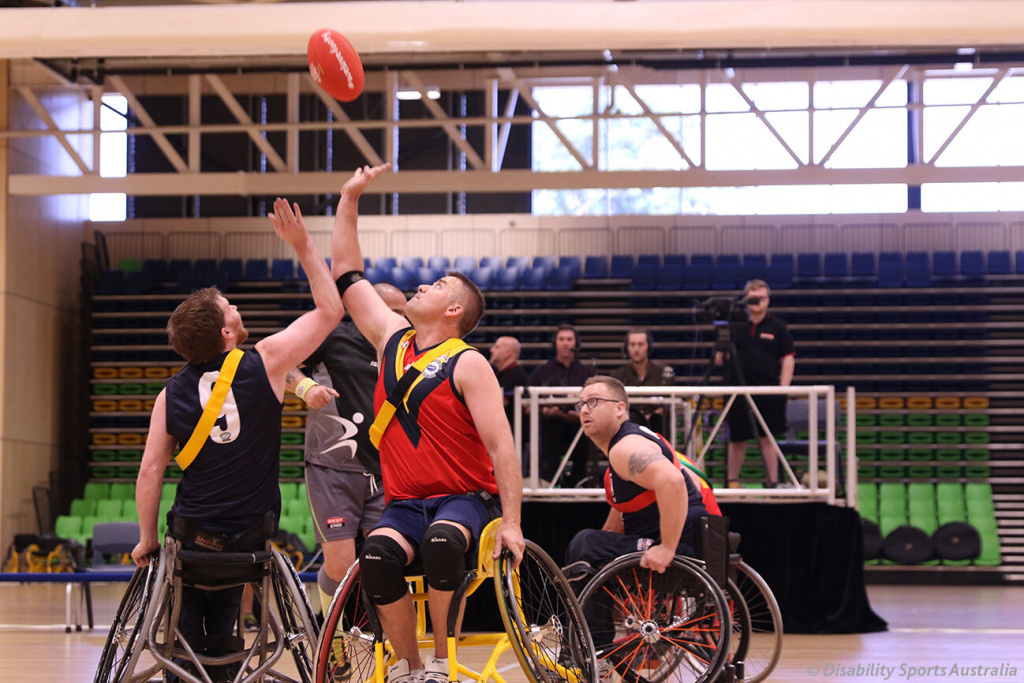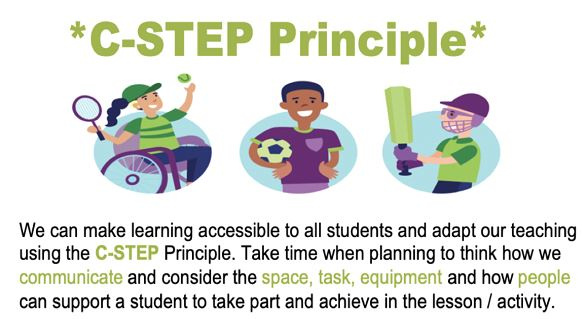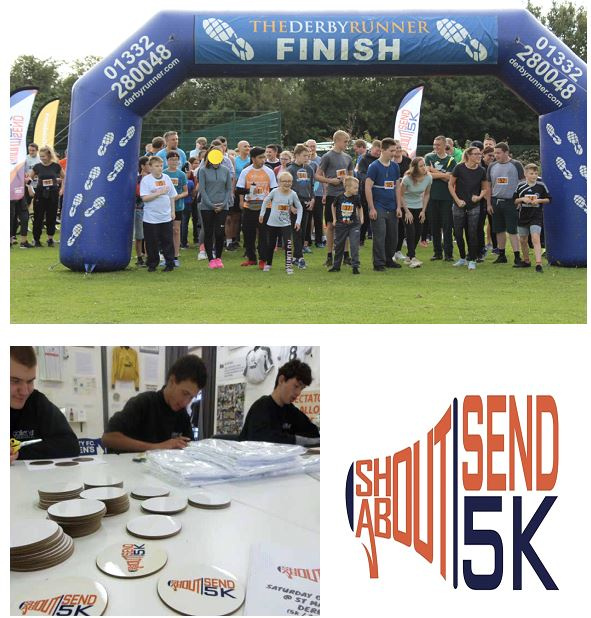
“Sport has the power to change the world. It has the power to inspire. It has the power to unite people in a way that little else does. It speaks to youth in a language they understand. Sport can create hope where there was only despair”.
Nelson Mandela
The above quote from Nelson Mandela beautifully articulates the amazing power sport has. From making lifelong friends on the rugby pitch, learning how to win and lose gracefully through to developing leadership skills and living a healthy lifestyle, sport has in many ways shaped the person I am today.
Many of my best memories have been playing or watching sport and it would be almost impossible to quantify the positive impact of sport on my health and wellbeing. Having worked in Specialist education for over a decade I’m more than familiar with the many barriers and disadvantage our students face, although this is perhaps none more evident than in the sporting arena.
In ‘A Fair, Supportive Society’ (2018) The Institute of Health Equity share some quite shocking statistics regarding long term outcomes for people with learning disabilities. The report highlights significant disadvantage in the areas of employment (7 times less likely to be in paid employment), increased vulnerability around Criminal activity (3 times more likely to end up in prison and alarming figures around long-term health outcomes (likely to die 15 – 20 years younger).
Perhaps most upsetting is the statistic that 50 % of learning-disabled people suffer from chronic loneliness. This harrowing report lays bare the disadvantage facing our young people with SEND and makes clear the need for us as professionals and indeed wider society to very much ‘flip the narrative’. I firmly believe that sport, exercise and leading a healthy, active lifestyle have a huge role to play here.
Sport England and Activity Alliance have reported that despite 4 out of every 5 disabled stating that they would like to be more active, they are twice as likely to be inactive, with 70% believing that sport is not for somebody like them. This raises the serious questions as to why this is the case? What the barriers are and most importantly how can we overcome them. Posing these questions to a number of SEND learners (KS2 to post 19 in both Specialist & Mainstream settings) and their families the answers brought out consistent themes around lack of opportunities, past negative experiences and very much a mixed picture with regards to accessibility and inclusive practice.
An Inclusive Physical Education curriculum should both engage and inspire young people to lead healthy and active lifestyles and broaden their experience of sport and fitness activities. Physical Education and sport should be accessible regardless of a young person’s disability or needs. Basing a curriculum and activities around a broad variety of sports helps provide new, exciting experiences that will spark an interest and motivate students to be more physically active and enjoy the associated health and social benefits this can bring.
A fantastic tool and starting point for any teacher or coach would be the C-STEP principle. Thinking how we communicate, considering the space, task, equipment and how people help us ensure accessibility and inclusion are at the heart of our practice. C-STEP prompts us to ‘Think SEND’ at every stage from planning, our environment, delivery and assessment and helps us build a strong universal offer in which all students can thrive and flourish regardless of their needs.
Communication
Use the students preferred communication methods be that verbal, Makaton, symbols or a combination of them all to ensure that lessons and activities are accessible. When teaching new skills in PE it is easy to be quite ‘wordy’ and technical in our delivery so using just key words / signs / symbols simple language in our instructions can be a huge support to students with poor receptive language and processing delays.
Space
Carefully consider the environment to ensure all students are able to access PE lessons and sporting activities. By making adaptations to the physical environment and space we can make all PE lessons inclusive for wheelchair users and students with a range of physical needs.
Increasing the space and ensuring there is room for wheelchairs to easily manoeuvre can help make a PE lesson fully inclusive and accessible for all students
Task
Changes and adaptations can be made to activities and specific tasks to ensure all students are able to participate fully. Adaptations can range from small, subtle changes when performing a skill through to larger modifications to the activity or sport itself.
Adapting a volleyball lesson by playing a match of seated volleyball is a great way to practice key skills and make the activity accessible to all students
Equipment
The equipment we use can make a big difference as to whether a lesson is inclusive and accessible or not. By making modifications to and sometimes changing the equipment we use we can ensure that all students are able to participate, enjoy and experience success in our lessons.
- Using balloons with rice in to support Visually Impaired learners in a tennis session.
- Large, bright, shiny, tactile resources to engage more sensory learners e.g. a ball wrapped in tin foil / bubble wrap”.
- Making adaptations to the size, weight and grip of PE equipment can have a positive impact on learners with a range of physical needs”.
- Using assistive resources to support students in target sports e.g. ramps to play Boccia, cricket and Ten pin bowling
People
The support students receive from key people throughout a PE lesson can make arguably the biggest impact on their skills, attitudes and progress. A key adult can model skills, break down activities into smaller steps and also support with the repetition and overlearning of skills that can be so important for SEND learners. Peers can be a huge support in helping to motivate and model skills whilst ensuring a student maintains their independence and doesn’t become over reliant on the support of a key adult. Students working in mixed ability groups can provide aspirational role models and opportunities for the most able to develop their skills further through demonstrating and coaching.

In 2019, St Martins School had a cohort of particularly talented athletes who experienced success on a local, regional and national level with several students winning medals and setting records. The very proud staff team were surprised to learn that despite the obvious ability and enthusiasm the students did not participate in any sport or training outside of our school environment.
Buoyed by their success our students were ready to take on the next challenge with ideas of longer distances (even marathons at one point!) and staging an event. As the conversations developed one thing became very clear…..’our students hated being treated differently and competing in ‘special events’…..all they wanted was to be the same as everybody else and take part as equals.
All aspects of the SHOUTaboutSEND 5K from its conception through to delivery was led by students. Students developed their employability skills designing the logo, marketing the event, making merchandise and taking care of the race logistics. The 5k attracted over 250 participants of mixed ability and all ages (club runners who had never encountered specialist education lined up against students using race runners).
At the heart of the event was a sports village in which we invited sports clubs from across the city to come and showcase their sport and to engage with our learners and families (clubs were very open about their desire to be more inclusive but shared a nervousness around their lack of expertise and that they might get something wrong or cause offence). The SHOUTaboutSEND 5K was a huge success with many athletes stating it was the ‘best atmosphere’ and ‘most fun’ they have had at a sporting event.
A growing number of organisations are leading fantastic work to make sport accessible and inclusive. As professionals an awareness of opportunities for students outside of school is a key part of our role in supporting them to lead active, healthy lifestyles and have high aspirations of what they might achieve in sport. Our ability to signpost organisations such as IMAS, Activity Alliance and Special Olympics Great Britain can be life changing for both our students and families.
Inclusive Sports organisations and inspiring role models
‘You have to see it to be it’ (Billie-Jean King)
Visibility and media coverage is an ongoing challenge for inclusive sport; however we are starting to see small steps in the right direction. Bold Marketing for the Paralympics have captured the public’s imagination and challenged perceptions around disability sport ‘Meet the Superhumans’ (C4) and ongoing campaigns such as Activity Alliance ‘Who Says’ tackle negative stereotypes head on.
Inspiring sportspeople such as Ella Beaumont (Wheelpower), Libby Clegg MBE (Paralympian) and Jonny Peacock MBE are great role models and incredibly motivating for our students. The popularity of the recent Netflix documentary ‘Rising Phoenix’ is another excellent example of a growing momentum for disability sport and a very well-deserved spotlight being shone on some incredible athletes.
‘Don’t dare pity me’ (BeBe Vio – Paralympian)
Conclusion
Covid-19 has had a disproportionate impact on disabled people and exacerbated many of the existing barriers and disadvantages faced by our students to lead active lifestyles and engage with exercise and fitness activities. It is important to highlight the silver linings of the past 12 months. Organisations such as Oak National Academy have championed inclusive sport through their online Physical Development lessons and resources and before Christmas staged a mixed ability event that saw over 6500 students from specialist and mainstream schools participate in a week-long challenge to ‘Stay active & Stay Connected’.
Students in many cases have engaged incredibly well with online learning and remote education and the creation of accessible, inclusive online fitness and sport content offer a great opportunity for us to support students to lead active, healthy lifestyles.

The national focus on health and wellbeing has perhaps never been as sharp as it has been across the pandemic. As schools welcome back increasing numbers of students, physical and mental health must be top priorities as we build towards reconnection and recovery.
As professionals we must seize the opportunity through inspiring, inclusive practice to ensure all students are well placed to enjoy the many benefits of leading an active, healthy lifestyle and fully experience the power of sport!
Alistair Crawford is the Teaching School Strategic Lead and Specialist Leader of Education from St Martins School Derby
Register for free
No Credit Card required
- Register for free
- Free TeachingTimes Report every month